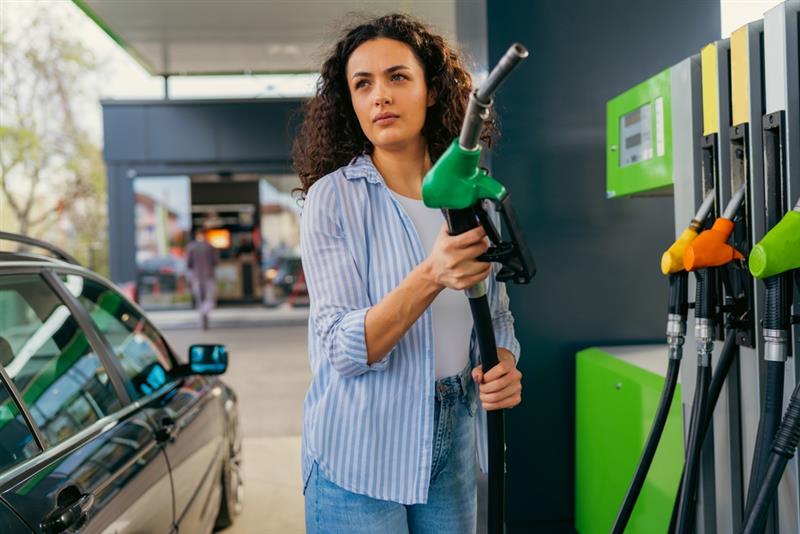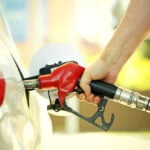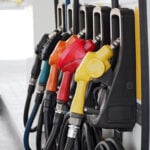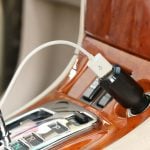Let’s assume you pull up to the gas station as usual. This time, you were in a hurry and let your muscle memory take over. You grab the first pump, believing it’s the right fuel, and start filling up the fuel tank. After a couple of liters in, you realize that you were filling up the gas tank with diesel instead. The scenario leaves a scent of panic even in your imagination, right? That’s why in this article, we are discussing what happens if you put diesel in a gas car, what to do if it happens, and how to avoid it. Read to know more.
Diesel
Diesel is particularly formulated to function with diesel engines and is most typically found in diesel-engine motor vehicles. Diesel motor vehicles include 18-wheelers, railroads, buses, and boats, among other things. It is another distillate fuel made from crude oil.
Gasoline
Like diesel, gasoline fuel is a form of crude oil, but slightly altered with added additives. Gasoline is blended with ethanol. According to the US Energy Information Administration, “Most motor gasoline marketed in the US includes roughly 10% fuel ethanol by volume.”
Gasoline vs. Diesel
The main distinction between gasoline and diesel is their density. Diesel fuel has a higher viscosity, or thickness, than gasoline. Gasoline is weak and has a paint-thinner stench, whereas diesel smells more like heavy kerosene. A brief whiff or swirl of the bottle will reveal the sort of fuel it contains. Another difference between diesel and gasoline is how the engine uses fuel to run.
Gasoline is classified as flammable, whereas diesel is classified as combustible. Fuel is injected into the cylinder chamber of an ICE by opening a valve. The spark plug ignites the gasoline and hence powers the engine block. Diesel fuel is pumped straight into the cylinder chamber and compressed rather than ignited. The end result is the same: the cylinder is pushed lower, and the engine continues to function normally. In short,
- Diesel fuel weighs more than gasoline.
- Diesel fuel is denser and also has a higher viscosity than gasoline.
- The ignition temperature of diesel fuel is lower than that of gasoline.
Both types of engines cannot run on the same fuel. For example, a diesel engine cannot operate on gasoline, and vice versa. Diesel is too thick for a gasoline engine fuel pump, while gasoline produces too much of an explosion for a diesel engine to manage.
What happens if you put diesel in a gas car?
When you fill diesel in a gas car, the fuel pump will have difficulty in transferring the mixture through the system since diesel fuel is heavier and denser than gasoline. It will be unable to pass freely through the fuel filter and hence block the fuel filter.
The diesel that does pass into the engine will block the fuel valves. This will cause the engine to clog and seize. The gasoline engine may continue to operate for a short time after diesel has been added to the tank, but this is only because it is still operating on the residual gasoline in the fuel line.
As awful as the circumstance is, putting gasoline into a diesel tank is even worse. Because gasoline has a high combustion rate, it ignites significantly faster than diesel fuel. Early ignition and volatility have the potential to inflict catastrophic damage to the diesel engine and its components.
What to do if you fill up your gas tank with diesel?
Sometimes, you might realize this while filling up the gas tank, and sometimes, the realization dawns when the engine halts. Let’s consider all the scenarios here.
While filling up the gas tank
It is the most manageable situation among the others. If you fill less than 5% of the overall tank capacity with diesel, all you have to do is fill the balance of the tank with gasoline. Because diesel easily combines with gasoline, it will be used up. And it’s safe to drive. However, it is preferable to drain the diesel and flush it with gasoline. This helps in avoiding fuel contamination. We suggest you tow the car to a service station.
After filling up the gas tank
Even if you realize this after filling more than 5% of the tank capacity, the problem is still manageable. All you have to do is turn off the engine and contact a tow truck. Tow the car to a service station and drain the fuel tank. After that, flush the tank and fill it with gasoline, and you’re good to go.
After engine ignition
If you start the engine after filling it with diesel, immediately switch it off. Tow the car to a service center and drain and flush the tank. Since you start the engine, the fuel lines require a thorough cleansing with gasoline. You should also clean the spark plugs. After that, you may fill up the gas tank like usual.
After driving around for a while
It is the worst of all possible outcomes. The first thing you should do is park the car safely and turn off the engine. Call for roadside assistance and have the vehicle transported to the nearest service station. To avoid fuel contamination, have the fuel tank and fuel lines cleaned and flushed with gasoline. You should also replace the gasoline filter to avoid further difficulties. After that, you may fill up the gasoline tank and drive around more.
How to avoid the mix-up in the future
If you are cautious, you can prevent the inconvenience of misfueling. Here are some suggestions to help you avoid putting the wrong fuel in your automobile.
Have a recognizable sticker
Having a fuel sticker on the vehicle’s fuel filler cap is one of the most basic and easiest ways to minimize misfueling. The sticker will specify whether the vehicle is gasoline or diesel. If you store a can of diesel in your garage, make sure it is a different color, label, and size from conventional gasoline cans. Careful storage reduces the possibility of putting diesel fuel in your gasoline-powered vehicle.
Check before entering the gasoline station
Always double-check before parking your automobile at a gas station. The color of the handle is the first clue that says, “This is a diesel pump.” Diesel pump handles are green, but gasoline pump handles are black and may have octane rating cards affixed to the top. Also, the diesel fuel pump’s nozzle is wider in diameter as opposed to the gasoline tank. No matter how hard you try, you will not be able to fit the nozzle of a diesel pump into the fuel neck of a gasoline vehicle. Diesel smells distinct and has the viscosity of a light oil.
Get out of the car when refueling
It is preferable to get out of the automobile and notify the fuel station attendant about which gasoline to fill. It will eliminate any uncertainty and allow you to observe which fuel is getting filled up.
Bottomline
The takeaway is that you should always be careful when pumping gas. Diesel in a gas car is a huge mistake! Diesel pumps, as previously stated, are typically green and have larger nozzles. The nozzle that will not fit into your gas-powered vehicle should tell you that you are on the wrong pump. If you store fuel in the garage, make sure each container is color-coded and labeled properly to avoid putting the wrong fuel in. Finally, the most important thing to remember is not to panic if you make this mistake. When you realize your mistake, do not drive your vehicle and immediately call a roadside assistance service.

Sara Sam may not look like your typical car and finance expert, but don’t let that fool you. With over four years of experience in the industry, she knows all the ins and outs of cars, car insurance, and refinancing. You can trust Sara to help you navigate the often-confusing world of automobiles and financing.


















